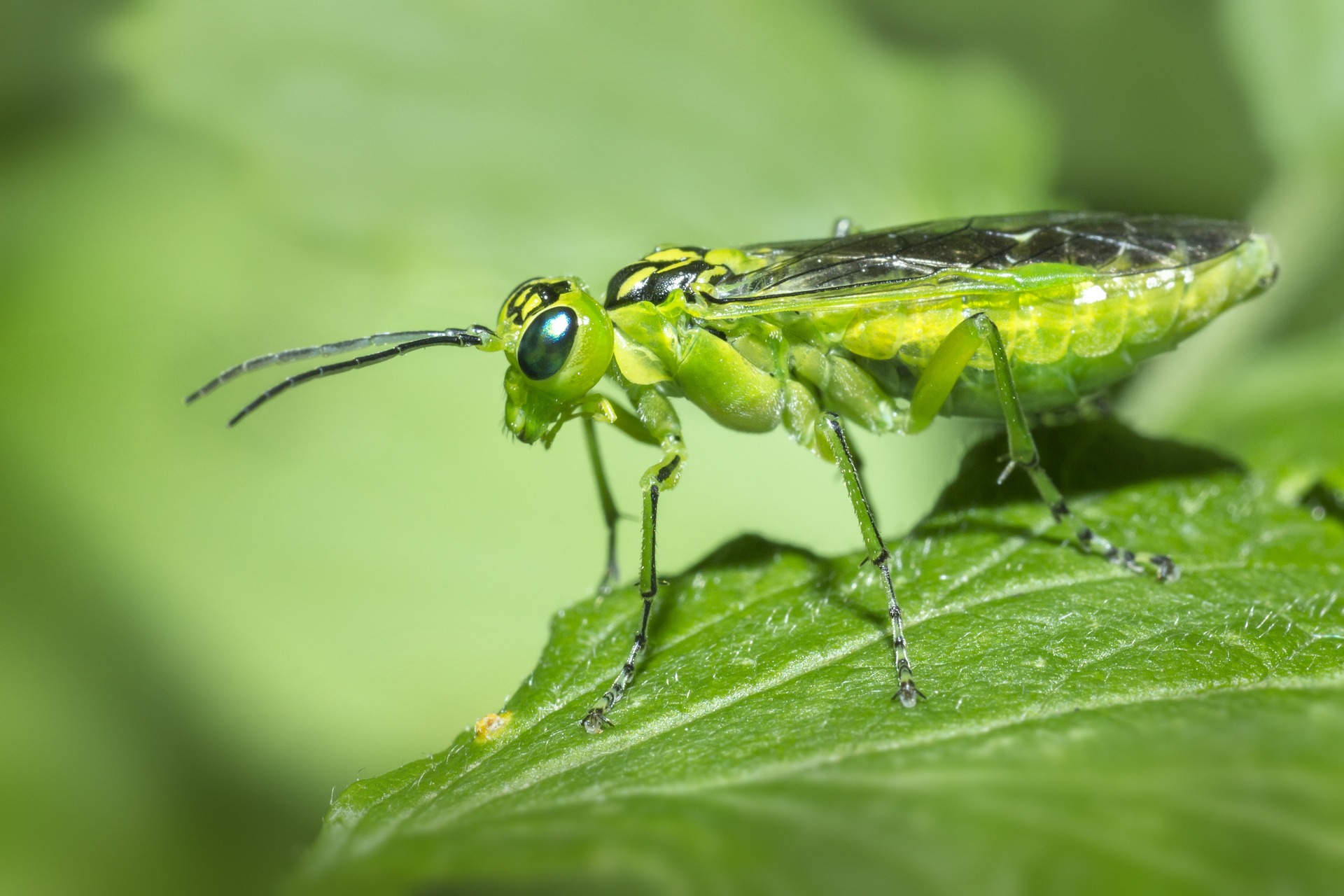The Green Sawfly (Rhogogaster viridis) is an attractive and intriguing species within the family Tenthredinidae, known for its vivid green coloration. Here’s an overview of Rhogogaster viridis:
Appearance:
- Size: Adults typically range from 10 to 12 millimeters in length.
- Coloration: They are bright green, which provides excellent camouflage among foliage. They may have some darker markings or subtle variations in green tones.
- Body Structure: Like other sawflies, they have a distinctive body shape with a broad waist, unlike the narrow waists of wasps. The head is relatively large with prominent compound eyes.
Habitat:
- Preferred Habitats: Rhogogaster viridis is commonly found in a variety of habitats including woodlands, meadows, gardens, and hedgerows. They are particularly associated with areas that have abundant vegetation.
- Geographic Range: This species is found throughout Europe and parts of Asia, preferring temperate climates.
Behavior:
- Feeding: Adults feed on nectar and pollen from flowers, as well as on small insects. Larvae feed on the leaves of a wide range of plants, particularly trees and shrubs.
- Activity: They are most active during the day, especially in sunny conditions. Adults can often be seen flying around flowers or resting on leaves.
- Flight: The flight of Rhogogaster viridis is usually short and deliberate, often moving from plant to plant.
Life Cycle:
- Eggs: Females lay their eggs on the leaves of host plants. The eggs are usually laid in small clusters or singly.
- Larvae: The larvae resemble caterpillars but can be distinguished by their sawfly-specific characteristics, such as more prolegs. They are also green and feed voraciously on leaves.
- Pupae: Pupation occurs in the soil or leaf litter where the larvae construct a cocoon.
- Adults: Adults emerge from pupae in late spring to early summer, depending on the climate. There is typically one generation per year.
Ecological Role:
- Pollination: Adults contribute to the pollination of flowers they visit for nectar.
- Herbivory: Larvae play a role in controlling plant growth by feeding on leaves, which can influence plant community dynamics.
- Food Web: Both larvae and adults serve as prey for a variety of predators, including birds, mammals, and other insects.
Conservation Status:
- Population: Rhogogaster viridis is not considered threatened and is relatively common in its range.
- Threats: The primary threats include habitat destruction and the use of pesticides that can reduce populations of both adults and larvae.
Interesting Facts:
- Camouflage: The green coloration of both adults and larvae provides excellent camouflage against foliage, helping them avoid predators.
- Saw-like Ovipositor: The name “sawfly” comes from the saw-like ovipositor females use to cut into plant tissue to lay their eggs.
- Larval Defense: Larvae can drop off leaves and curl up as a defense mechanism when threatened.
Identification Tips:
- Look for Bright Green: Their bright green coloration makes them relatively easy to spot against leaves.
- Distinctive Body Shape: Note the broad waist and large head which distinguish them from wasps.
- Habitat: Observing them in areas with abundant green foliage and flowers can increase the chances of identification.
In summary, the Green Sawfly (Rhogogaster viridis) is a fascinating insect with striking coloration and significant ecological roles. It is a common sight in temperate habitats, contributing to both pollination and plant population control. Its presence indicates a healthy, biodiverse environment.
Visited 944 times, 11 visit(s) today
Views: 1219
Subscribe to the newsletter:
